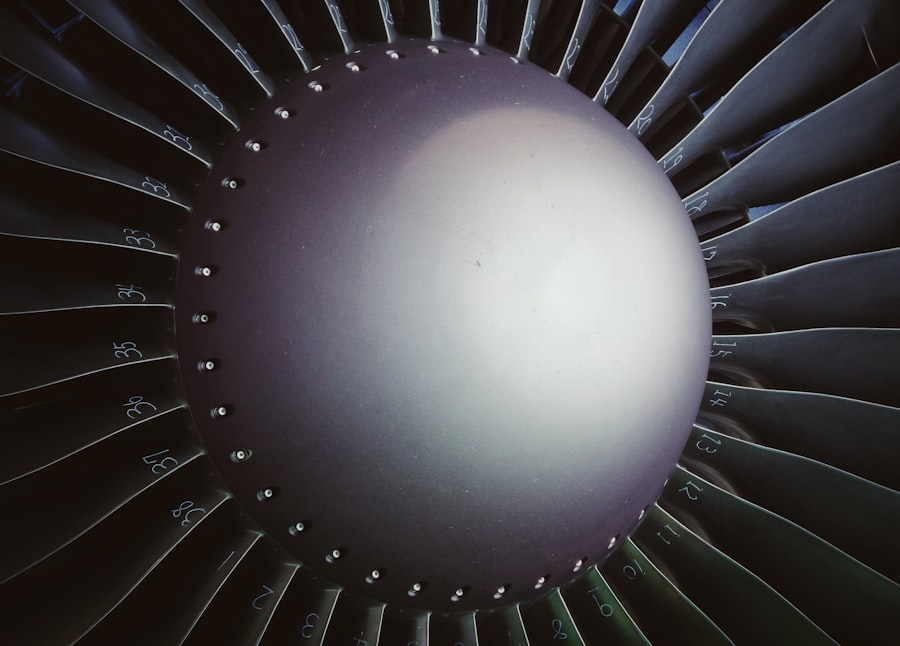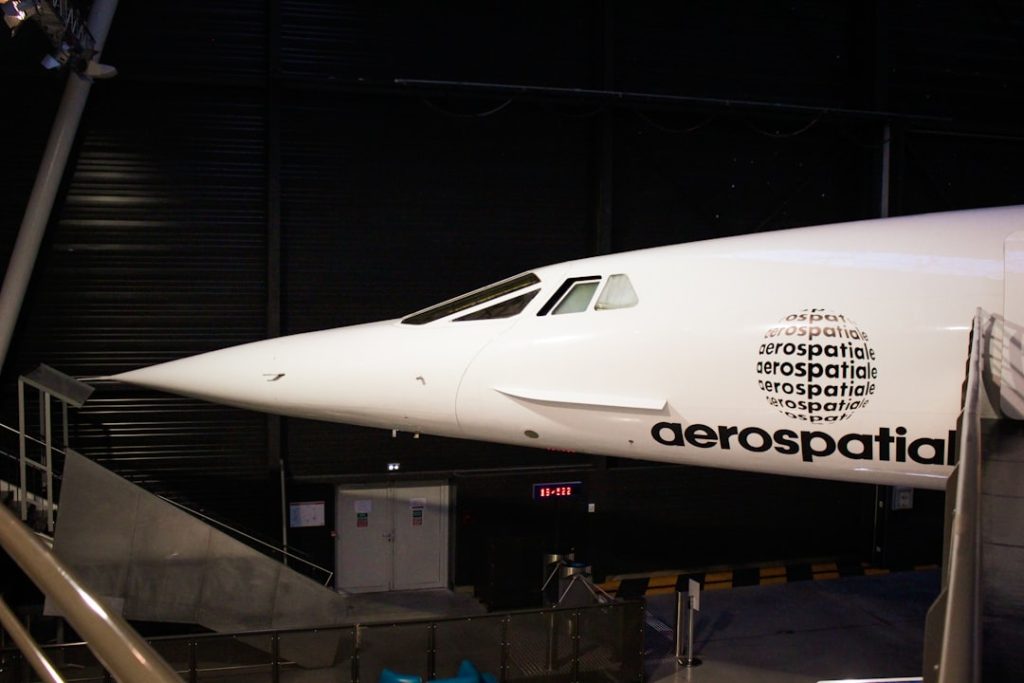Aerospace companies play a pivotal role in the development and advancement of technologies that enable flight and space exploration. This sector encompasses a wide range of activities, including the design, manufacture, and maintenance of aircraft, spacecraft, satellites, and related systems. The aerospace industry is not only vital for national defense and security but also for commercial aviation, space exploration, and scientific research.
Major players in this field include Boeing, Lockheed Martin, Airbus, and Northrop Grumman, among others. These companies are at the forefront of innovation, pushing the boundaries of what is possible in air and space travel. The aerospace industry is characterized by its complexity and the high level of expertise required to succeed.
It involves a multidisciplinary approach that integrates engineering, physics, materials science, and computer science. The challenges faced by aerospace companies are immense, ranging from stringent regulatory requirements to the need for cutting-edge technology that can withstand extreme conditions. As the demand for air travel continues to grow and space exploration becomes more accessible, the importance of aerospace companies in shaping the future of transportation and exploration cannot be overstated.
Key Takeaways
- Understand the basics and significance of aerospace companies in the industry.
- Use effective research methods to identify aerospace companies in your vicinity.
- Plan visits to aerospace companies to gain firsthand experience and insights.
- Build professional networks through interactions and events with aerospace company representatives.
- Explore collaboration and career opportunities by engaging actively with aerospace companies.
Researching Nearby Aerospace Companies
When looking to engage with aerospace companies, the first step is often thorough research. Identifying local aerospace firms can provide valuable insights into the industry landscape and potential opportunities. Various resources can aid in this endeavor, including online databases, industry reports, and local business directories.
Websites like the Aerospace Industries Association (AIA) and the Federal Aviation Administration (FAA) offer comprehensive lists of aerospace companies categorized by their specialties and locations. Additionally, platforms such as LinkedIn can be instrumental in discovering companies and their key personnel. Once a list of nearby aerospace companies is compiled, it is essential to delve deeper into each organization’s focus areas and recent projects.
Understanding their core competencies—whether they specialize in commercial aviation, military applications, or space technology—can help tailor future interactions. For instance, a company like SpaceX focuses on space transportation and satellite deployment, while Boeing has a significant presence in both commercial and defense sectors. By analyzing their recent press releases, product launches, and technological advancements, one can gain a clearer picture of how these companies operate and where they might align with personal or professional interests.
Visiting Aerospace Companies

Visiting aerospace companies can provide firsthand experience that is invaluable for anyone interested in the field. Many aerospace firms offer tours or open house events that allow visitors to see their operations up close. These visits can be particularly enlightening as they showcase the advanced technologies and processes involved in aerospace manufacturing and design.
For example, a tour of Boeing’s assembly line reveals the intricate steps involved in building commercial aircraft, from initial design to final assembly. During these visits, it is crucial to engage with employees and ask questions about their roles and experiences within the company. This interaction can provide insights into the company culture, work environment, and the types of projects employees are involved in.
Additionally, many aerospace companies have educational outreach programs aimed at inspiring the next generation of engineers and scientists. Participating in these programs can further enhance understanding of the industry while fostering connections with professionals who share similar interests.
Networking with Aerospace Companies
| Metric | Description | Value | Unit | Notes |
|---|---|---|---|---|
| Number of Aerospace Companies Contacted | Total companies reached out to for networking | 45 | Companies | Includes manufacturers, suppliers, and service providers |
| Networking Events Attended | Industry conferences, trade shows, and meetups attended | 8 | Events | Focus on aerospace and defense sectors |
| Successful Connections Made | Number of meaningful contacts established | 30 | Contacts | Includes follow-up meetings and calls |
| Partnerships Initiated | New collaborations or joint ventures started | 5 | Partnerships | Focused on R&D and supply chain integration |
| Average Response Time | Time taken to receive replies from companies | 3 | Days | Measured from initial contact to first response |
| Follow-up Rate | Percentage of contacts followed up after initial meeting | 85 | % | Indicates engagement level |
| Lead Conversion Rate | Percentage of contacts converted into business leads | 40 | % | Reflects effectiveness of networking efforts |
Networking within the aerospace sector is essential for building relationships that can lead to career opportunities or collaborative projects. Attending industry conferences, seminars, and workshops can facilitate connections with key players in the field. Events such as the Paris Air Show or the Farnborough International Airshow attract thousands of professionals from around the world, providing a platform for networking and knowledge exchange.
Engaging in discussions during these events can lead to valuable contacts who may offer guidance or mentorship. In addition to formal events, leveraging social media platforms like LinkedIn can enhance networking efforts. Joining groups focused on aerospace topics allows individuals to connect with industry professionals and participate in discussions about current trends and challenges.
Sharing relevant articles or insights can also help establish credibility within the community. Building a robust professional network not only opens doors to potential job opportunities but also fosters collaboration on innovative projects that can drive advancements in aerospace technology.
Learning from Aerospace Companies
Aerospace companies are rich sources of knowledge and expertise that can significantly benefit individuals seeking to deepen their understanding of the industry. Many firms offer internships or co-op programs designed for students or recent graduates looking to gain practical experience. These programs provide an opportunity to work alongside seasoned professionals on real-world projects, allowing participants to apply theoretical knowledge in a practical setting.
For instance, internships at companies like Raytheon Technologies or Honeywell Aerospace can expose individuals to cutting-edge technologies in avionics or propulsion systems. Moreover, many aerospace companies invest in educational initiatives aimed at fostering interest in STEM (science, technology, engineering, and mathematics) fields among young people. Workshops, webinars, and online courses offered by these firms can provide valuable insights into specific areas of aerospace engineering or technology development.
Engaging with these educational resources not only enhances technical skills but also demonstrates a commitment to continuous learning—an essential trait in an ever-evolving industry.
Collaboration Opportunities with Aerospace Companies

Collaboration with aerospace companies can take many forms, ranging from research partnerships to joint ventures on specific projects. Universities and research institutions often seek partnerships with aerospace firms to leverage their expertise and resources for innovative research initiatives. For example, collaborations between universities like MIT and companies such as Boeing have led to advancements in aerodynamics and materials science that benefit both academia and industry.
Additionally, startups focusing on aerospace technologies may find opportunities for collaboration with established firms looking to innovate or expand their product offerings. These partnerships can provide startups with access to funding, mentorship, and industry insights that are crucial for growth. For instance, partnerships between small tech firms specializing in drone technology and larger aerospace companies have resulted in groundbreaking developments in unmanned aerial systems (UAS), showcasing how collaboration can drive innovation.
Potential Career Opportunities with Aerospace Companies
The aerospace industry offers a diverse array of career opportunities across various disciplines. Engineering roles are among the most sought after, encompassing fields such as mechanical engineering, electrical engineering, software engineering, and systems engineering. Each of these areas plays a critical role in the design and development of aircraft and spacecraft.
For example, mechanical engineers may focus on structural integrity while electrical engineers work on avionics systems that control navigation and communication. Beyond engineering positions, there are numerous roles in project management, quality assurance, supply chain management, and research and development that are essential for the successful operation of aerospace companies. Positions in regulatory compliance are also vital due to the stringent safety standards governing the industry.
Furthermore, as the sector evolves with advancements in technology such as artificial intelligence and automation, new roles are emerging that require expertise in data analysis and cybersecurity.
Conclusion and Next Steps
Engaging with aerospace companies presents numerous opportunities for learning, networking, collaboration, and career advancement. By researching local firms, visiting their facilities, networking with professionals in the field, and exploring educational resources offered by these companies, individuals can gain valuable insights into this dynamic industry. The potential for collaboration on innovative projects further enhances the appeal of engaging with aerospace firms.
For those interested in pursuing a career in aerospace or simply wanting to learn more about this fascinating field, taking proactive steps is essential. This may include seeking internships or co-op positions at local aerospace companies, attending industry events to expand professional networks, or enrolling in relevant educational programs that align with personal interests. By immersing oneself in the aerospace community and actively seeking out opportunities for growth and collaboration, individuals can position themselves for success in this exciting sector that continues to shape the future of transportation and exploration.




